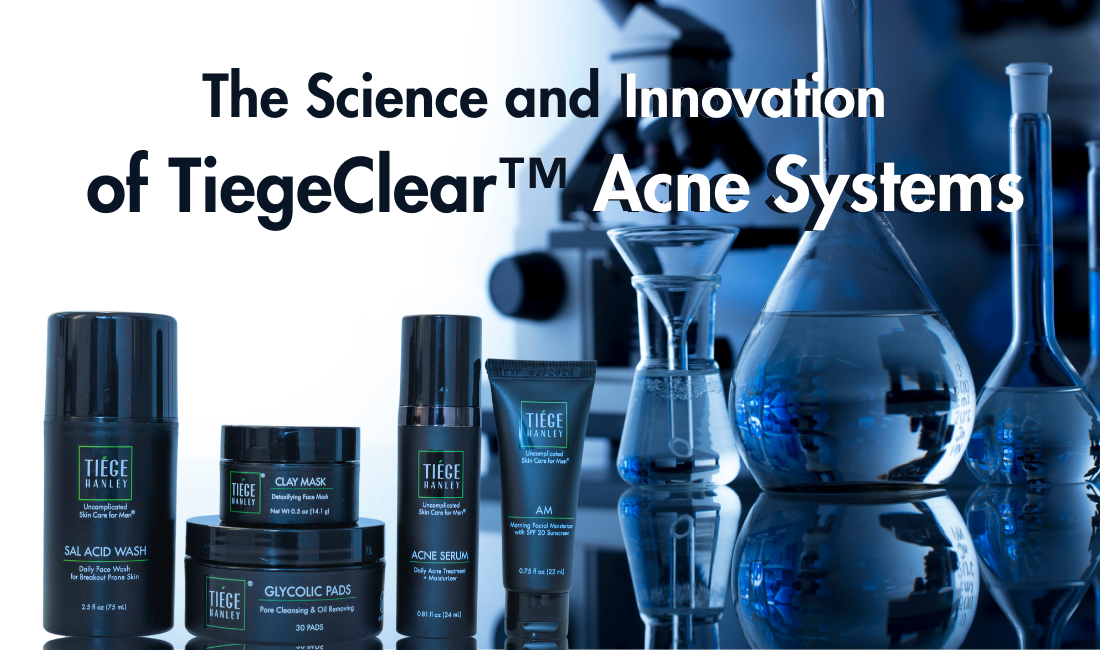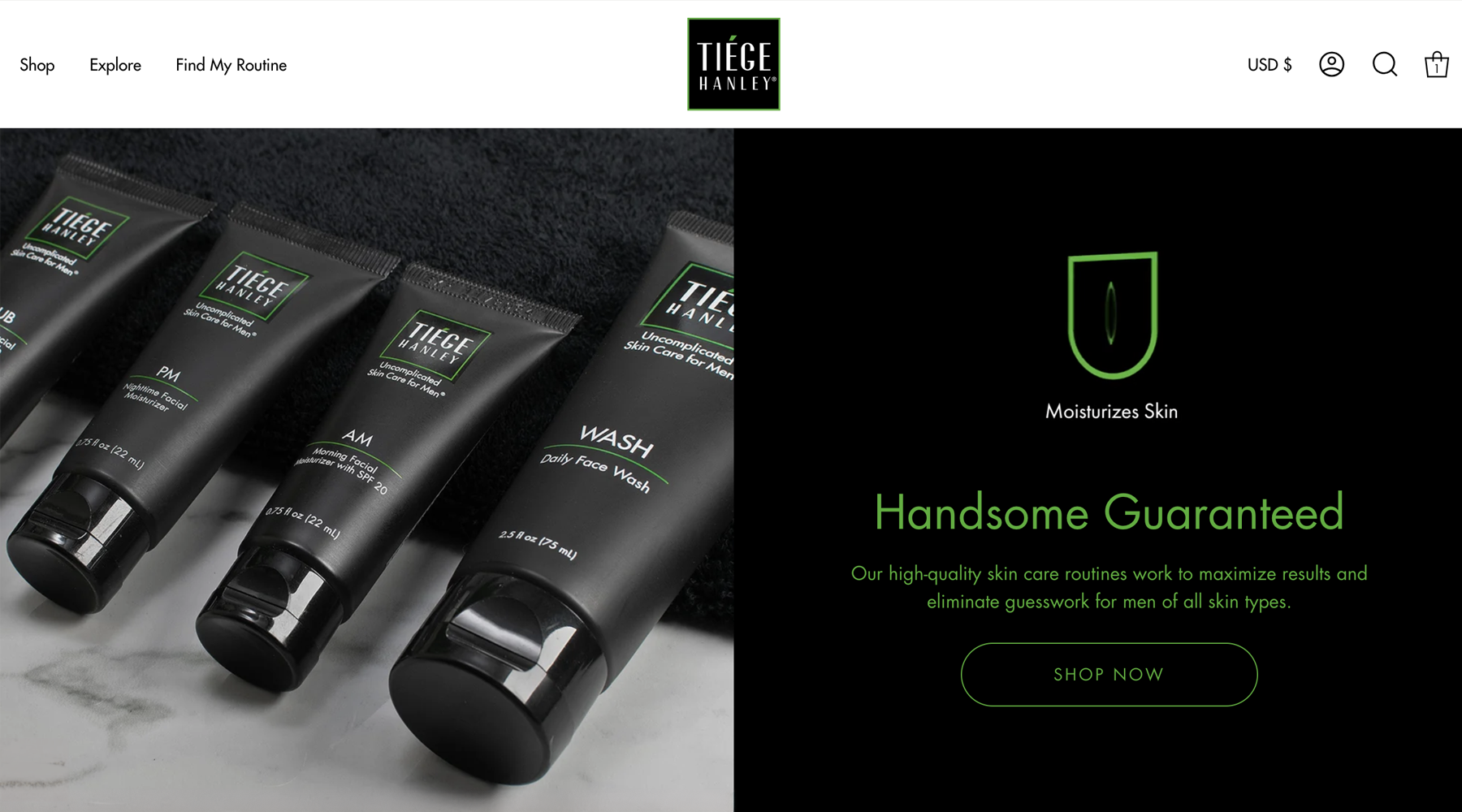Although there is no good place to get pimples, acne on the forehead can be especially awkward.
Acne in this region can be red, painful to the touch and may feel like a giant bullseye on your forehead.
If you keep breaking out on your forehead, it’s time to do a deep dive into what could be causing it.
Once you know the cause of forehead acne, you can take steps to treat and prevent it.
Here are three things you need to know about acne on the forehead:
- Forehead acne can appear as a series of red bumps or as a stand-alone pimple.
- Hair care products and hats are two sneaky causes of acne on the forehead.
- An over-the-counter (OTC) acne treatment system is an effective and affordable way to treat and prevent some types of forehead acne.
Causes of Forehead Acne
If you’ve been reading our blog, then you probably know that there are many things that can cause acne breakouts.
When it comes to forehead acne specifically, the following culprits could be to blame:
Hats
Hats can be a sneaky cause of your forehead acne. When your hat rubs against your forehead, it can create friction and heat.

The combination of heat and friction can block your skin’s hair follicles, causing a specific type of acne breakout called acne mechanica.
Fortunately, this is an easy fix. Stop wearing your hat for a couple of weeks and see if your forehead acne clears.
Note: If you’re wearing a hat to shield your scalp from the sun, be sure to take additional sun safety precautions in replacement of your hat.
According to a recent press release from the National Cancer Research Institute, skin cancer rates in men are steadily rising, especially for aggressive melanoma (see claim: “Researchers…found that melanoma death rates in men were rising in all but one country.”)
GOT ACNE?Hair Care Products
The ingredients in hair care products such as hair gel and pomades can block the pores of your skin, leading to irritation and breakouts.
Often referred to as pomade acne, this type of acne usually appears along the hairline, neck and back.
The best thing you can do for your forehead acne is to stop using hair care products which contain pore-clogging ingredients.
If you don’t want to give up hair gel, find a non-comedogenic hair gel instead.
Diet
If you’re prone to breakouts on your forehead, your diet may be to blame.
Men with combination skin types may already have an oily forehead, which is made worse when eating foods that trigger insulin spikes.

Multiple studies have found that avoiding empty carbs and other high-glycemic foods can potentially clear up your acne.
According to a 2007 study published in the American Journal of Clinical Nutrition, acne lesions in young males improved significantly after eating a low-glycemic-load diet for 12 weeks (see claim: “(At 12 wk…total lesion counts had decreased more…in the low-glycemic-load group…”)
Acne Forehead Treatment Options
If you’ve stopped wearing hats and using greasy hair care products, but have seen no improvement to your acne, it may be time to find a powerful acne treatment system.
Here are a couple of treatment options to consider:
OTC Treatments Containing Salicylic Acid
Over-the-counter (OTC) acne treatment systems are an affordable and convenient way to treat your acne.
In fact, many OTC acne products are dermatologist recommended, which means you don’t necessarily need to see a costly specialist to find an acne product you trust.
The best OTC acne treatments, like our cutting-edge Daily Moisturizing Acne Cream, contain Salicylic Acid and is dermatologist recommended.
Salicylic Acid is especially effective at treating acne because it can soothe inflamed skin and reduce the excess oil secreted on your forehead.
Another acne-fighting ingredient you’ve probably heard of is Benzoyl Peroxide.
Although it can help reduce acne lesions, it’s not always the best option for people with sensitive skin.
In fact, a study published in Clinical Therapeutics found that Salicylic Acid was more effective than Benzoyl Peroxide and caused fewer adverse reactions (see claim: “Comparative studies of salicylic acid have shown it to be superior to benzoyl peroxide in reducing the total number of acne lesions.”)
Take the skin care quizPrescription Treatments
For severe acne on the forehead, seeing a dermatologist for a prescription acne medication may be worth the extra time and money going to a specialist entails.
Your dermatologist might prescribe you antibiotics or retinoids to clear up your acne.
Lasers and chemical peels are also frequently recommended for those suffering from severe acne.
How to Prevent Forehead Acne
While not every type of forehead acne is preventable, there are things that you can do to stop it from occurring in the future.
One effective prevention method is getting on a daily skin care regimen for men.
You may also want to consider getting regular facials to improve your skin.
Facials for men are no longer uncommon and they can provide amazing health benefits to your skin.
Final Words
No matter how tempting it may be to pop your forehead zit, resist the urge.
Forehead pimples are notoriously difficult to pop and can result in a scar if you’re not careful.
To achieve healthier skin without causing acne scarring, give one of Tiege Hanley’s acne systems for men a try.
Not sure which acne level is right for you? Chat with us today and we’ll be happy to help in any way we can.
Actual Tiege Hanley customer testimonial:
“Over a 3 year period, I probably spent over two grand in skin care and still had acne. I decided to reach out and request to be a part of the Tiege Hanley Acne trial and I have been blown away. After two weeks, my skin was clear. It’s not the acne cream alone that cleared it up, but how all of the products work together as a whole.” Kyle B., NJ.
References
Robyn N Smith, Neil J Mann, Anna Braue, Henna Mäkeläinen, George A. Varigos, "A low-glycemic-load diet improves symptoms in acne vulgaris patients: a randomized controlled trial", The American Journal of Clinical Nutrition, Volume 86, Issue 1, July 2007, Pages 107–115.









